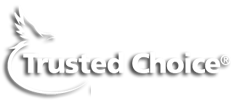Below is a list of the most common FAQ’s we receive related to Car Insurance.
Car Insurance Minimum Liability Requirements
Before you can drive a car in any state, the driver and/or the car must be insured. There is some variation between states concerning whether car insurance “follows” the car or the driver, and there are several factors that significantly affect car insurance rates. The minimum auto liability limits also vary from state to state. In North Carolina, the minimum liability limit for car insurance is $30,000 bodily injury per person, $60,000 per accident, and $25,000 for property damage. On quotes or in the policy- this will usually appear as 30k/60k/25k.
Does it matter who is at fault for a car accident in North Carolina?
If you are in an accident, the law determines whose policy pays. North Carolina, for example, is a “fault” state- meaning that if two or more cars are involved, one of the vehicles will be considered liable in the vast majority of cases. The car insurance policy for the driver or owner will be responsible for 100% of the damage to all people and property affected by the accident.
It is also important to note that car insurance in North Carolina follows the car, not the driver. In other words, if the driver who caused the accident is not the owner of the car, the car owner’s insurance policy will be the one to pay first.
By contrast, in “no fault” states, each vehicle owner’s car insurance policy pays for the damage to their own car- regardless of who caused the accident. This is very important to understand when relocating to a different state since accidents that may not matter in one state- could affect your pricing in another state. This is one very good reason to discuss your car insurance with a local insurance agency- and not an online agent 10 states away that happens to be licensed.
Between these two ends of the fault spectrum there are a variety of proportional fault states that assign a percentage of blame to each car. This is sometimes referred to as “shared fault”. Maybe the driver who ran the red light was mostly at fault, but the car they hit was also going the wrong way in the wrong lane! Based on the witness statements and observation of physical evidence, the officer on scene will create a report, and that report will be the basis for determining which car insurance policy applies.
What are the recommended auto liability limits?
Liability pays for damage to the property of others- or for their injuries, but liability coverage does not pay for damages to the at-fault vehicle in a fault state. If you hit something or someone with your car, your car insurance policy is responsible to pay for resulting injuries and damages in most states.
Your car insurance policy will show three numbers- sometimes abbreviated like this: 100k/300k/50k. In this example- the limits are $100000 bodily injury per person, $300000 bodily injury per accident, and $50000 for property damage. The minimum limits are slightly different in each state. In North Carolina, the minimums are $30,000 bodily injury per person, $60,000 per accident, and $25,000 for property damage. Minimums in other states start as low as $15k/$30k/$15k. While these are the minimum limits for car insurance required by law, they certainly are not the recommended limits. $100,000 per person, $300,000 per accident, and $50,000 for property damage are much more common, and those seeking significant protection from major accidents typically opt for limits of at least $250,000 per person. If you are in a multi-car accident with numerous injuries or death, the claim amount can climb quickly.
Will an umbrella policy pay for large auto claims?
While you are not required to carry higher auto liability limits, it’s important to know that if the car insurance limits run out- the problem doesn’t go away. You can be personally sued and suffer financial consequences as the result of being underinsured if you cause an accident. If you don’t have the money to pay, it can be filed as a collection action on your credit report and even force you into bankruptcy. Maintaining adequate limits for your car insurance is very important. This is where an umbrella policy may be a prudent consideration. Starting at under $100/yr, you can add $1 million per occurrence to your coverage limits. For high net worth individuals, umbrellas are available up to tens of millions in liability.
What if the other driver is uninsured?
This is where Un/Underinsured Motorist Coverage (UM/UIM) comes in. It is recommended for your UM/UIM limits to match your own auto liability limits. If you have underinsured coverage, your company will pay your claim on behalf of the at-fault party and then your insurance company will pursue them to get reimbursed. This is called ‘subrogation’ and it is extremely helpful to leverage the legal resources of the insurance company without complicating your life for something that wasn’t your fault in the first place.
What is COMPREHENSIVE coverage for my car?
Comprehensive coverage on your car insurance policy includes coverage for things like theft, vandalism, and storm damage. It also includes being struck by an animal. The road kill claim might seem like it should fall under the collision portion of your car insurance policy since it is very literally a collision…but the presumption is that a deer darting in front of you is not something you can necessarily plan for or avoid. It isn’t exactly like following too closely. We can assume that might be one reason why damage from an animal has been written to fit within the definition of a Comprehensive claim- even if it feels like a collision! Your comprehensive coverage has its own deductible on your car insurance policy and the lower your deductible is, the higher the rate will be. Most policies also waive your comprehensive deductible for things like windshield repair.
What is Collision coverage?
Collision coverage is exactly what it sounds like- your car colliding with something else, whether it is a stationary object or another car. The collision deductible on your car insurance policy will have a similar effect to the comprehensive deductible. The lower your deductible, the higher the rate will be for that car.
What does Full Coverage include?
Full coverage is not really an official insurance term- but it generally means that you have both comprehensive and collision coverage in addition to auto liability on your car insurance policy. It is possible to have comprehensive coverage without collision or collision coverage without comprehensive coverage (depending on your insurance company), but if you only have one or the other, this is not generally considered “full coverage”.
Are all car insurance policies the same?
While many policies have the same basic components, and price is always a factor- there are certainly differences between coverage options. Some are minor differences like deductibles, towing, or rental car reimbursement, and some are major, like First Accident Forgiveness and repair/replacement cost coverage which could save you thousands of dollars out of pocket if you have an accident.
Can I save money by combining my home and car insurance together?
In most cases, yes. For companies that offer both home and auto insurance, they typically provide a discount on each policy if the other policy is also insured by them.
In some cases, a person may not be eligible for both types of policies with the same company. This could happen for any number of reasons, not limited to their home being valued above what that company is willing to insure, or they have too many speeding tickets on their driving history, etc. In any case, it’s not always the least expensive route, but it’s often the case.



